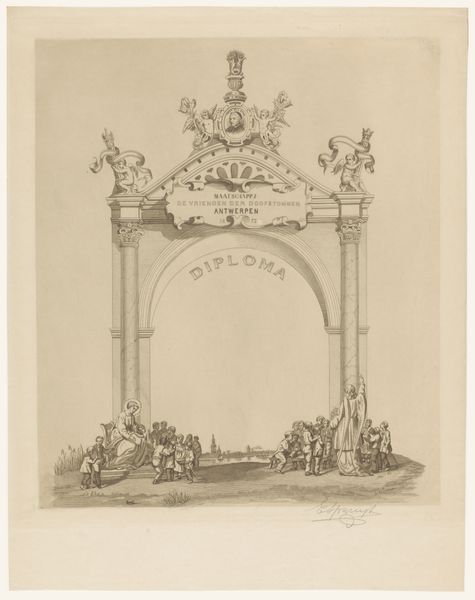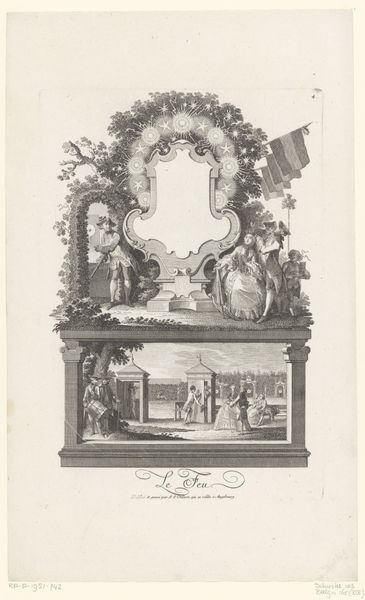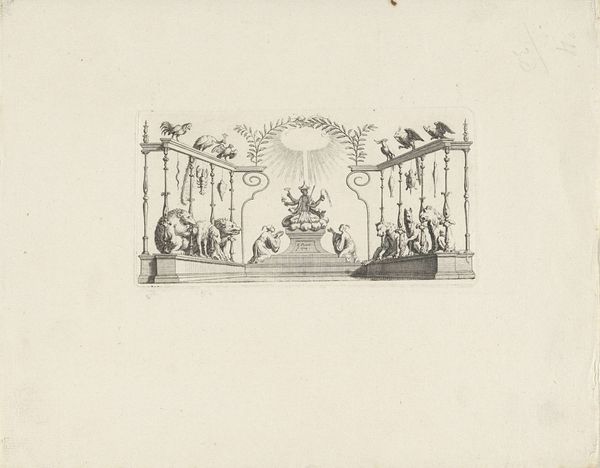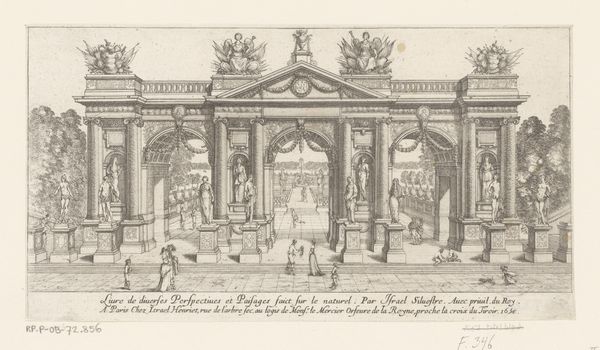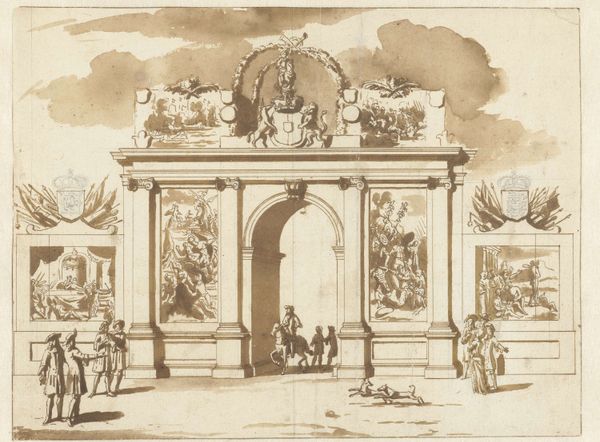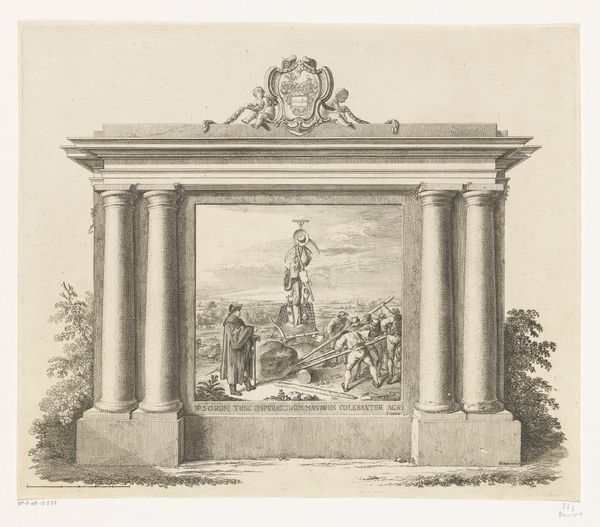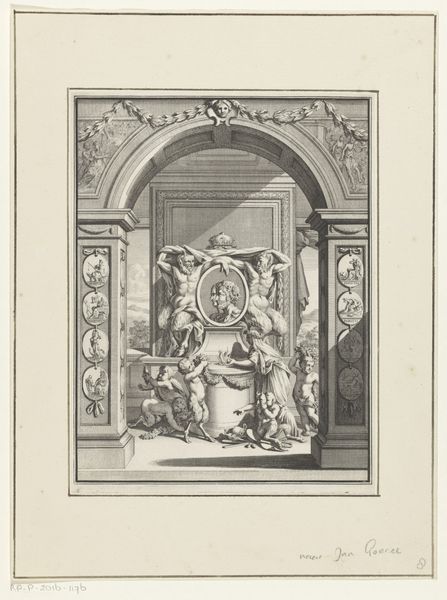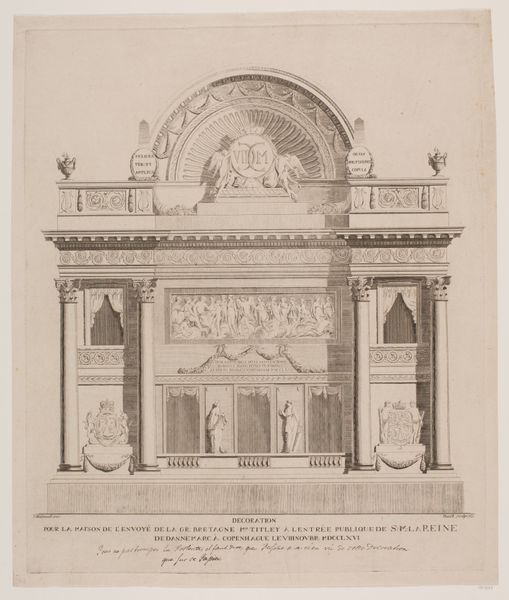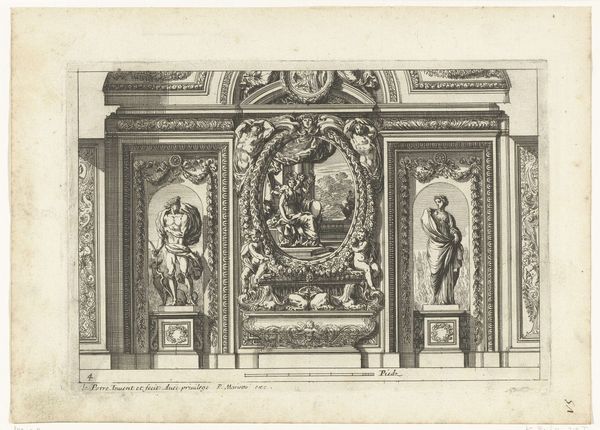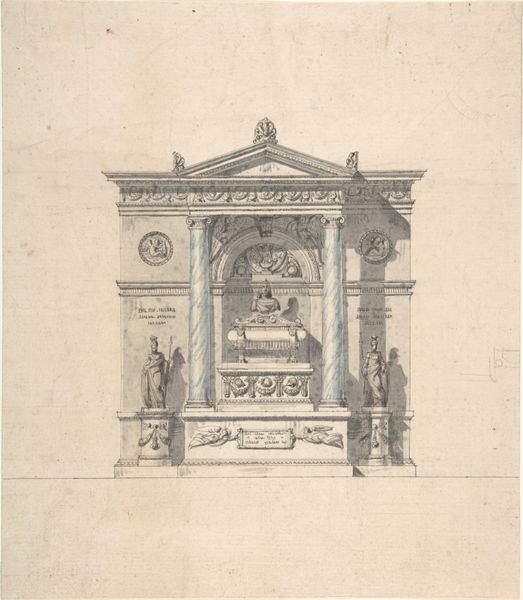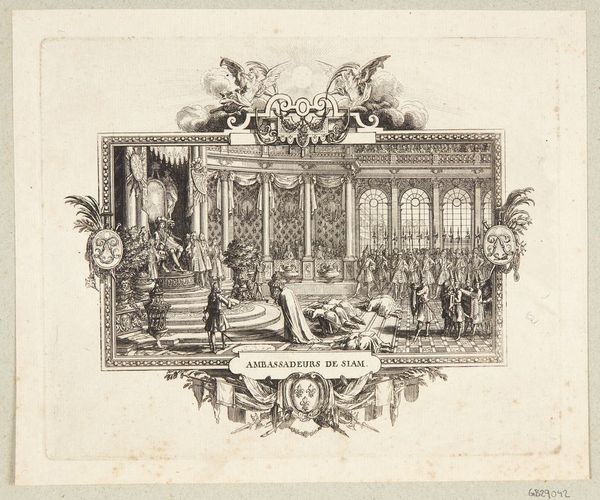
Triomfpoort op de Plaats voor de intocht van koning Willem III te Den Haag, 1691 1691
0:00
0:00
anonymous
Rijksmuseum
print, etching, engraving
#
baroque
#
dutch-golden-age
# print
#
etching
#
old engraving style
#
19th century
#
cityscape
#
history-painting
#
engraving
Dimensions: height 258 mm, width 305 mm
Copyright: Rijks Museum: Open Domain
Curator: Let's examine this engraving, “Triomfpoort op de Plaats voor de intocht van koning Willem III te Den Haag, 1691,” dating back to 1691. It commemorates William III’s arrival in The Hague, doesn’t it? It is an impressive work from the Dutch Golden Age, currently held at the Rijksmuseum. Editor: My initial impression is of layered formality – a constructed stage set captured in crisp lines. The level of detail is intriguing given its size. I'm struck by its depiction of power and ceremonial grandeur, and curious how it uses established symbols. Curator: Precisely. The formal elements certainly support the symbolic intent. Consider the central arch, its framing columns, and the classically inspired sculptures adorning its surfaces. Note the composition too – a symmetrical arrangement emphasizing the triumphal nature of the event. The artist seems to be creating an experience. Editor: The arch, of course, is an ancient symbol of victory and safe return. But beyond that, the images, banners, and figures feel specifically tailored to elevate William's status. Those banners depict the lion of the Netherlands and British heraldry together. This iconography signals unity and dominance, something deeper than simple welcome. It speaks volumes about dynastic ambitions. Curator: And what of the scale? The figures below the arch appear almost diminutive, further enhancing the monumental character of the gate itself. Even the application of shadow via etching creates an elevated feeling. I'm fascinated by the strategic deployment of classical ideals. Editor: Absolutely. Beyond its function as documentation, the print serves as a careful piece of political theater. It blends history, art, and propaganda, appealing to both reason and the subconscious through careful symbol placement. Curator: It is really a fascinating study in artistic propaganda, and what role the arts have in creating narratives that outlast even our lives. Thank you for those excellent points about the cultural history. Editor: My pleasure. Seeing these symbols woven together really gives us insight into the values of that specific historical moment.
Comments
No comments
Be the first to comment and join the conversation on the ultimate creative platform.

